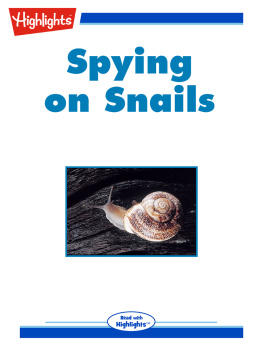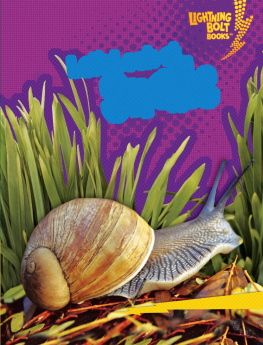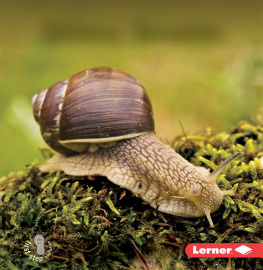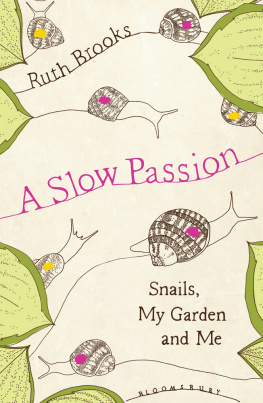Contents
EDITORS
SARAH A. CORBET, S C D
DAVID STREETER, MBE, FIB IOL
JIM FLEGG, OBE, FIH ORT
P ROF . JONATHAN SILVERTOWN
P ROF . BRIAN SHORT
*
The aim of this series is to interest the general
reader in the wildlife of Britain by recapturing
the enquiring spirit of the old naturalists.
The editors believe that the natural pride of
the British public in the native flora and fauna,
to which must be added concern for their
conservation, is best fostered by maintaining
a high standard of accuracy combined with
clarity of exposition in presenting the results
of modern scientific research.

William Collins
An imprint of HarperCollinsPublishers
1 London Bridge Street
London SE1 9GF
WilliamCollinsBooks.com
This eBook edition published by William Collins in 2016
Copyright Robert Cameron, 2016
Robert Cameron asserts the moral right to be identified as the author of this work.
Cover design linocut by Robert Gillmor.
A catalogue record for this book is available from the British Library.
All rights reserved under International and Pan-American Copyright Conventions. By payment of the required fees, you have been granted the non-exclusive, non-transferable right to access and read the text of this eBook on-screen. No part of this text may be reproduced, transmitted, downloaded, decompiled, reverse engineered, or stored in or introduced into any information storage and retrieval system, in any form or by any means, whether electronic or mechanical, now known or hereinafter invented, without the express written permission of HarperCollins Publishers.
Source ISBN: 9780007113002
Ebook Edition December 2016 ISBN: 9780008203498
Version: 2016-10-14
C HECKLISTS OF NATIONAL and regional faunas normally list all the species recorded, give the full, correct scientific name for each () and is periodically updated. It is based on a thorough review of the names and status of European species by the CLECOM (CheckList of European Continental Mollusca) group. Some of the nomenclature used is contested, however, and not all national checklists or identification guides follow it precisely.
In Britain and Ireland, the original recognised list is:
Anderson, R. (2005). An annotated list of the non-marine Mollusca of Britain and Ireland. Journal of Conchology , , 607638. This is periodically updated online, and the latest version can be found in the Special publications section of the Conchological Society of Great Britain and Irelands website (www.conchsoc.org/resources/anderson.pdf). It also gives some of the most recently used synonyms, and has extensive notes on naming problems.
For identification, there are three guides to the fauna of parts or all of Europe:
Kerney, M. P. & Cameron, R. A. D. (1979). A Field Guide to the Land Snails of Britain and North-west Europe. Collins, London. This provides pictures (paintings and line-drawings), descriptions and approximate ranges, but it does not have a formal key and is now a bit dated.
Kerney, M. P., Cameron, R. A. D. & Jungbluth, J. H. (1983). Die Landschnecken Nord-und Mitteleuropas. Paul Parey, Hamburg and Berlin. This is a revised and expanded version, in German, of Kerney & Cameron (1979), covering more countries. Again, some new discoveries and revisions are missing.
Welter-Schultes, F. W. (2012). European Non-marine Molluscs, a Guide for Species Identification . Planet Poster Editions, Gttingen. This provides photographic images, distribution maps and brief descriptions for more than 1,800 species of land slug and snail from the whole of Europe and part of Anatolia. Freshwater molluscs are also included. The nomenclature differs in some cases from that used in Fauna Europaea . While most species can be identified, the book does not have a key, and is not adequate for some critical distinctions.
For Britain and Ireland alone, there are three guides:
Cameron, R. A. D. (2008). Keys for the Identification of Land Snails in the British Isles. Field Studies Council, Preston Montford. This excludes slugs.
Rowson, B., Turner, J., Anderson, R. & Symondson, W. O. C . (2014). Slugs of Britain and Ireland: Identification, Understanding and Control. Field Studies Council, Telford. This is a very comprehensive guide, incorporating molecular data, but giving keys and a good range of visible characters to aid identification.
Naggs, F., Preece, R. C., Anderson, R., Peiris, A., Taylor, A. & White, T. S. (2014). An Illustrated Guide to the Land Snails of the British Isles. Conchological Society of Great Britain and Ireland and Malacological Society of London, SRP Ltd, Exeter. This large fold-out leaflet has good photographic images of all land snails (but not slugs) found in Britain and Ireland, including greenhouse aliens.
An online key to land snails is in preparation, sponsored by the Conchological and Malacological societies. The Conchological Societys website has a key to some common species. In addition, there are drawings and notes on habitat and status in:
Kerney, M. P. (1999). Atlas of the Land and Freshwater Molluscs of Britain and Ireland. Harley Books, Colchester, and the Conchological Society of Great Britain and Ireland. This provides maps showing all authenticated records by 10 kilometre squares, submitted to the Conchological Societys recording scheme. More recent records are available online from the National Biodiversity Network (NBN). While not all have been authenticated, those entered from the recording scheme can be identified.
A number of guides to other national faunas, too many to list here, are also available. There are, however, two recent ones I have found particularly useful, both of which include many species found in Britain and Ireland:
Koivunen, A., Malinen, P., Ormio, H., Terhivuo, J. & Valovirta, I. (2014). Suomen Kotilot ja Etanat: Opas Maanilviisten Maailmaan. Hynteistarvike Tibiale Oy, Helsinki. (A guide to Finnish land slugs and snails, in Finnish). While the text may be impenetrable to most, the quality of the illustrations is superb and especially useful for the diagnostic features of tiny species.
Horsk, M., Juikov, L. & Picka, J. (2013). Molluscs of the Czech and Slovak Republics . Vt Kabourek, Zlin. This guide, in both Czech and English, again has excellent pictures, and includes internal features where these are diagnostic. It also has short descriptions of each family.
I have had a lot of experience in writing keys, in trying to use keys and guides in places where I am unfamiliar with the fauna, and in running courses to help people identify slugs and snails. This has taught me that while keys and guides are useful, there is no substitute for sitting by Nellie: having your identifications checked by those with more experience. In Britain and Ireland, the Conchological Society runs a recording scheme and arranges field meetings and workshops. Joining the society and attending such events is the obvious first step to learning to identify our fauna.
S LUGS AND SNAILS are familiar to us all. For the enthusiast, a variety of keys and field guides are available for identification, but details of the animals natural history are largely confined to the professional literature. The New Naturalist library has tried for many years to fill this gap, and we are fortunate that Robert Cameron has now enabled us to do so. The long delay has one benefit; as Robert explains, there has been an explosion of knowledge about slugs and snails in the twenty-first century, and a book with the same title written 20 years ago would have been very different.








